
 Share
Share

 Print
Print
Order Type: S/O & P/O
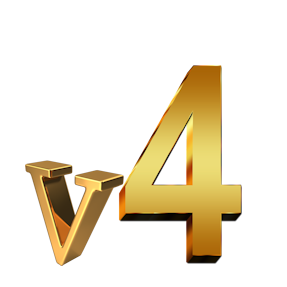
Using the 'S/O & P/O' order type option, the company change transaction will change the P/N's company ownership as a result of a sales agreement. The system will automatically generate a Sales Order for the old Company and a Purchase Order for the new company to justify the change in company ownership. These new orders can then be invoiced to better track financial movement. A new Fixed Asset record will be created for the P/N to replace the original fixed Asset Record for the old company (the original F/A will be deleted). The system will also add the appropriate historical records to the transaction history of the P/N's batch to denote the change in company ownership, including P/O and S/O numbers.

![]() Note: When switch
Note: When switch ![]() INTERSELLCOMS is set to Yes, when a W/O is Closed and the issued consumable part's company is different than the company of the W/O, a PO/SO transaction will occur automatically changing the company of the consumable parts. When set to No, no company change will occur.
INTERSELLCOMS is set to Yes, when a W/O is Closed and the issued consumable part's company is different than the company of the W/O, a PO/SO transaction will occur automatically changing the company of the consumable parts. When set to No, no company change will occur.
In this example, the following P/N initially belongs to company A (COMP-A).
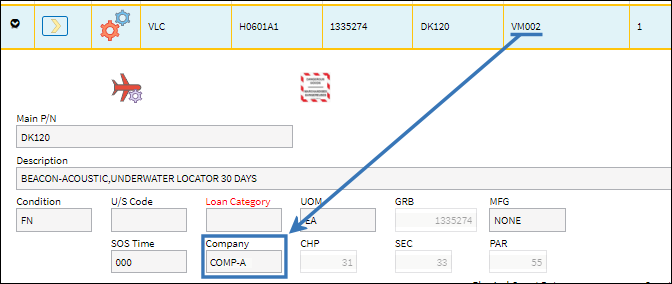
The P/N is currently linked to Fixed Asset 49680. The part's value is 583.00.
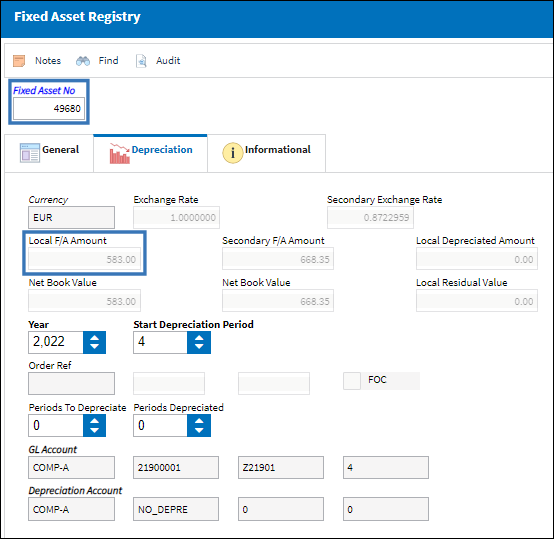
The P/N is set to change its company ownership from COMP-A to company B (COMP-B). The company change will be performed as a sale, where COMP-A sells the P/N to COMP-B. Note that the Ovr List Price checkbox is selected and the new price is specified at 587.00. Because the sales price is greater than the unit's original cost, an additional cost of 4.00 was automatically entered in the Addition Cost field. Additionally, a new Transfer Order will be created for this transaction as per the New radio button.

Note: Users will have the option to create a New T/O, add a line item to an Existing T/O, or to not use a T/O, depending on the scenario.
When the transaction is performed by selecting the Save ![]() button, the system will automatically display the Transfer Order header for the new T/O (only when the T/O options are used).
button, the system will automatically display the Transfer Order header for the new T/O (only when the T/O options are used).
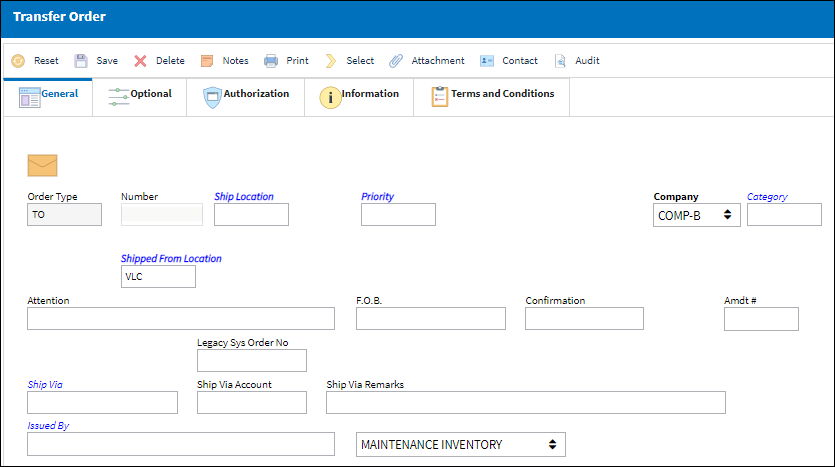
After specifying all required information, the T/O detail will be displayed. After saving the detail record, the T/O is created. Note the transfer-to company is listed in the Company field.
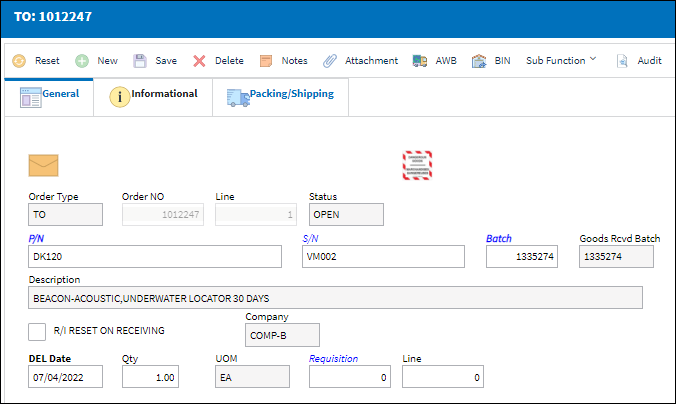
The Company Change transaction has successfully changed the P/N's company ownership to COMP-B, as visible from the Inventory Transaction window.

The Transaction History of the part via Inventory Detail has been updated to denote the change in company ownership. The Company Change created the following transactions for the Company Change:
- P/O Receiving - for the Purchase Order from Company B
- Value Adjustment - for the Sales Order from Company A
- Quantity Adjustment - for the Sales Order from Company A
- T/O Create - for the Transfer Order to Company B (This transaction only occurs when a Transfer Order is linked to the Company Change and the T/O Detail is saved, as shown above.)
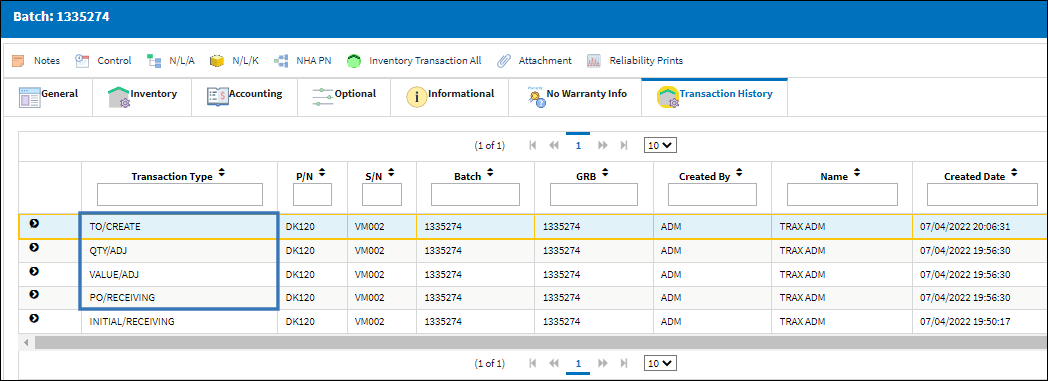
Each record is associated with the creation of the S/O, P/O or T/O.
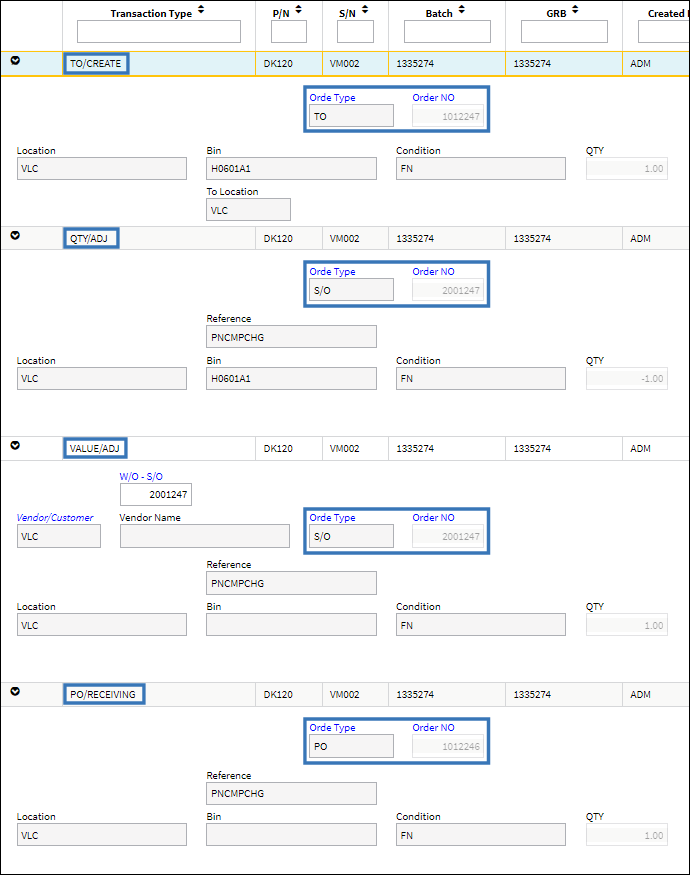
Both the P/O and S/O have a Total Cost that equals the List Price Override entered during the Company Change transaction.
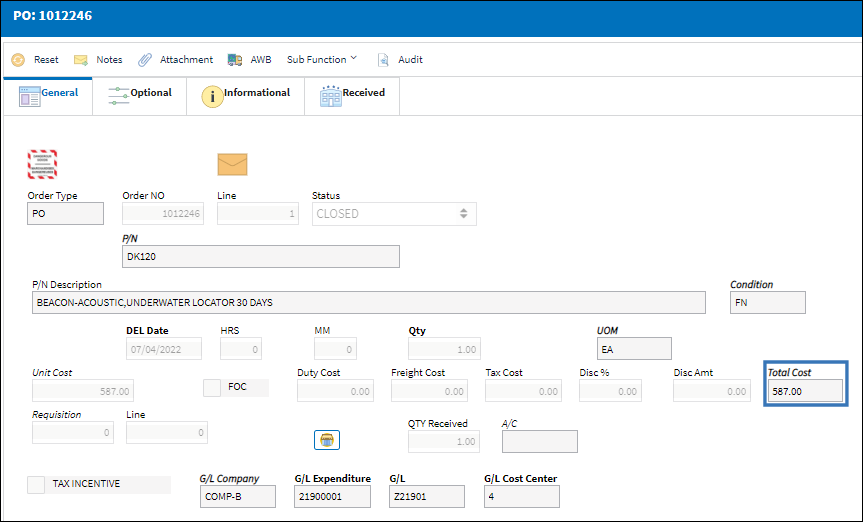
Note: The Sales Order and the Purchase Order are created in Closed Status automatically.
![]() Note: For the Sales Order, the Expenditure Code used will be the Expenditure Code of the Old Company selling the part. The Expenditure of the old company and the Customer code for the company receiving the part is configured in the Company Profile window for the two companies involved in the company change (see below). And the Currency used for the Sales Order and Purchase Order will be the Currency of the New Company buying the part.
Note: For the Sales Order, the Expenditure Code used will be the Expenditure Code of the Old Company selling the part. The Expenditure of the old company and the Customer code for the company receiving the part is configured in the Company Profile window for the two companies involved in the company change (see below). And the Currency used for the Sales Order and Purchase Order will be the Currency of the New Company buying the part.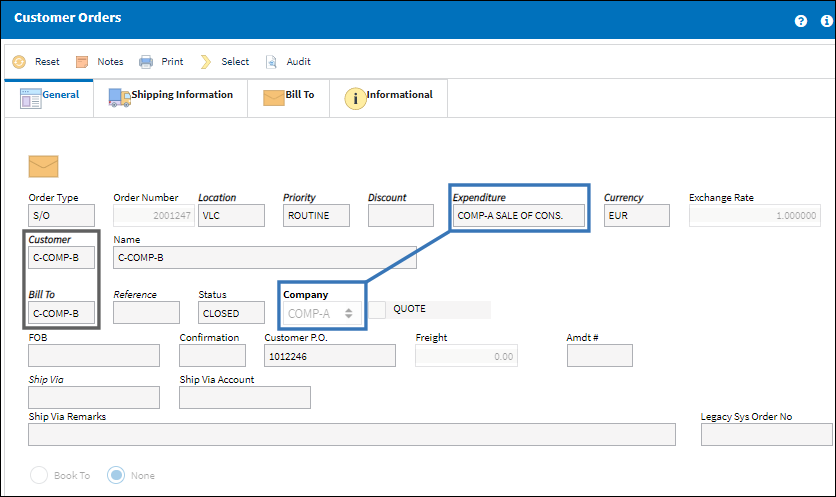
As a result of the Company Change transaction, the original F/A for the part has been deleted.
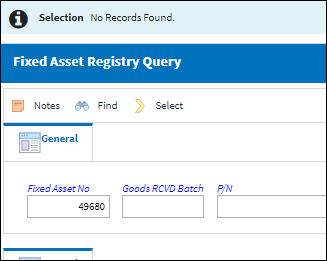
A new F/A was auto-generated by the system that is associated with the new owner of the P/N.
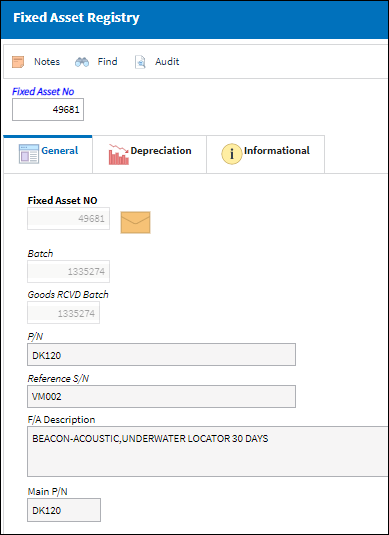
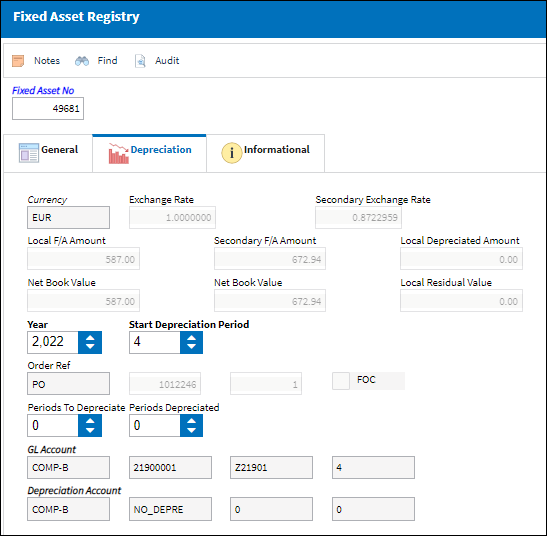
From the Journal Entry Query, notice J/Es were written with 'INTER' as the Category Code.
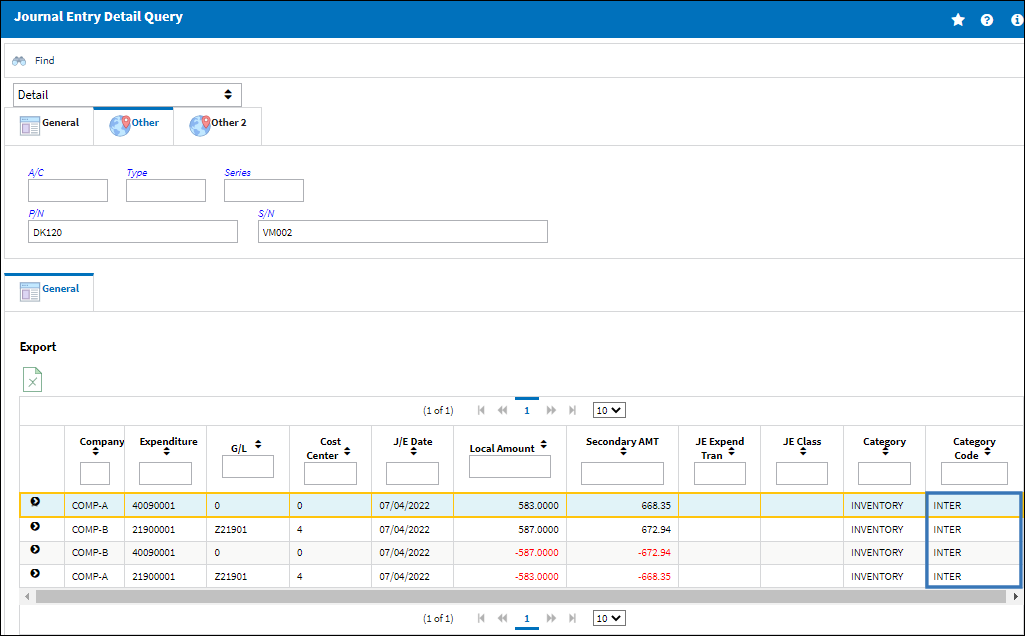
To invoice the orders, the P/N must first be received through the T/O.
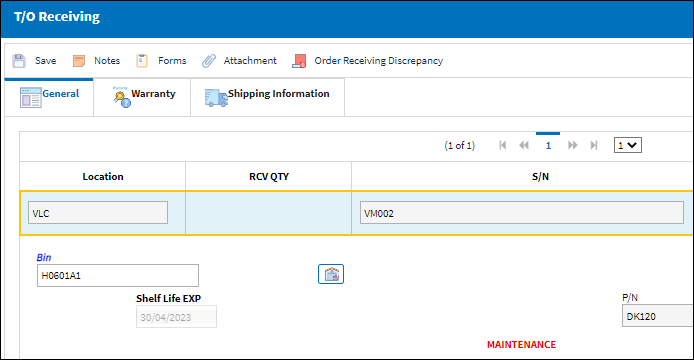
Once received, the respective company can begin the invoicing process. In this example, the S/O has been invoiced. Note that the Bill To field is auto-populated by the system.

The Sales Order is invoiced through the Customer Invoice Authorization Explorer, while the P/O would be invoiced through the Link module.
Note: For more information on the invoicing process for P/Os and S/Os, please refer to Sales Order Process and Purchase Order Process.
The system refers to the Customer field of the affected company's Company Profile to auto-populate customer-related fields.

Note: The Customer field is only available for Inter Company Billing-enabled companies.

 Share
Share

 Print
Print